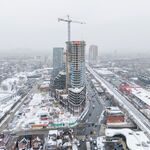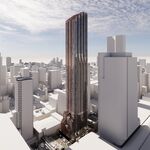OneCity
Senior Member
First, the City studied a 12-hour period, not 24. Midnight-Six Am was never counted.
Second, I think you'll find many residents, particularly on Woodbine are not unhappy (some are), but for many it meant that they gained permanent on-street parking, where previously they had to move their car in rush hours. The street is also quieter in the off-peak now.
Third, the majority of marginally inconvenienced motorist do not live in the area in question, they merely pass through, they don't get to vote for ward councillor.
Finally, you can't just extract the bike lane from Kingston to Gerrard as if that section of street operates in isolation.
If you have 2 lanes northbound up to Gerrard and it then drops to one, you would have to force traffic in the right-lane to exit, or merge w/the left lane.
The road to the north would not have capacity to absorb traffic from the south.
These things have to planned in a coordinated way.
Apologies I misread your post as 24. Kinda lost interest to do more than glance when you started off kinda arrogant.
Guess you read something else as well as I never directly implied anything about extracting the lane from the section of Kingston to Gerrard. Just stated their has been greater impact while serving so few. Bottom line far too many people need to drive and until that changes these cycling projects removing lanes should not be implemented around the Core.
Last edited:




